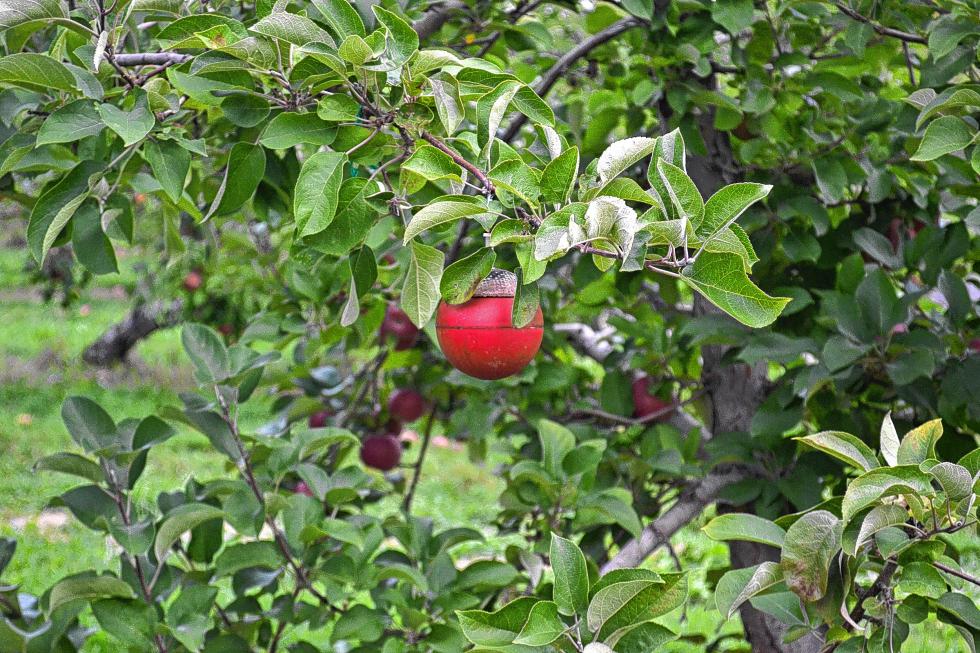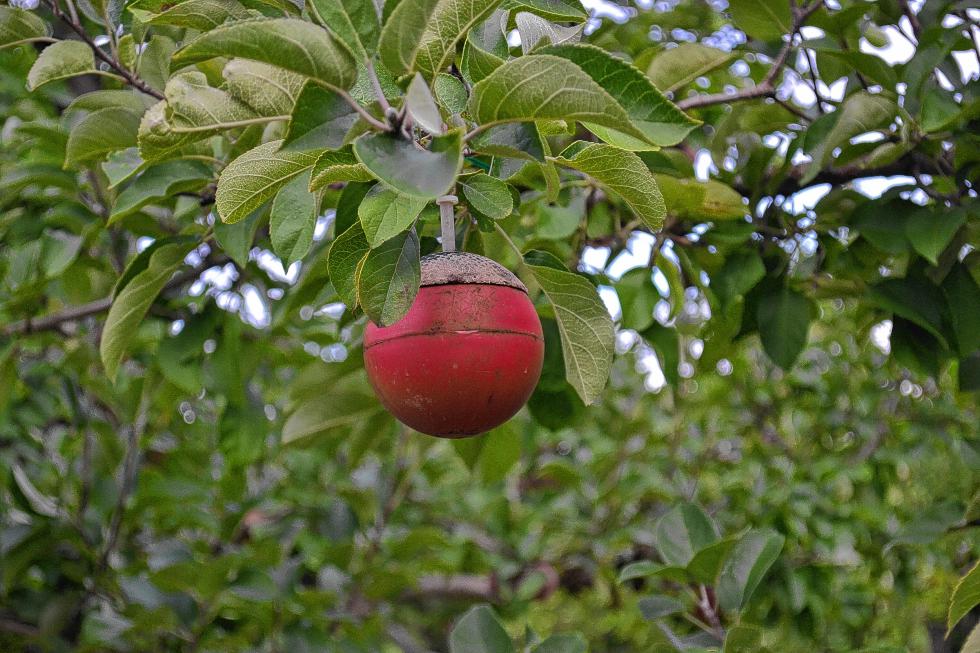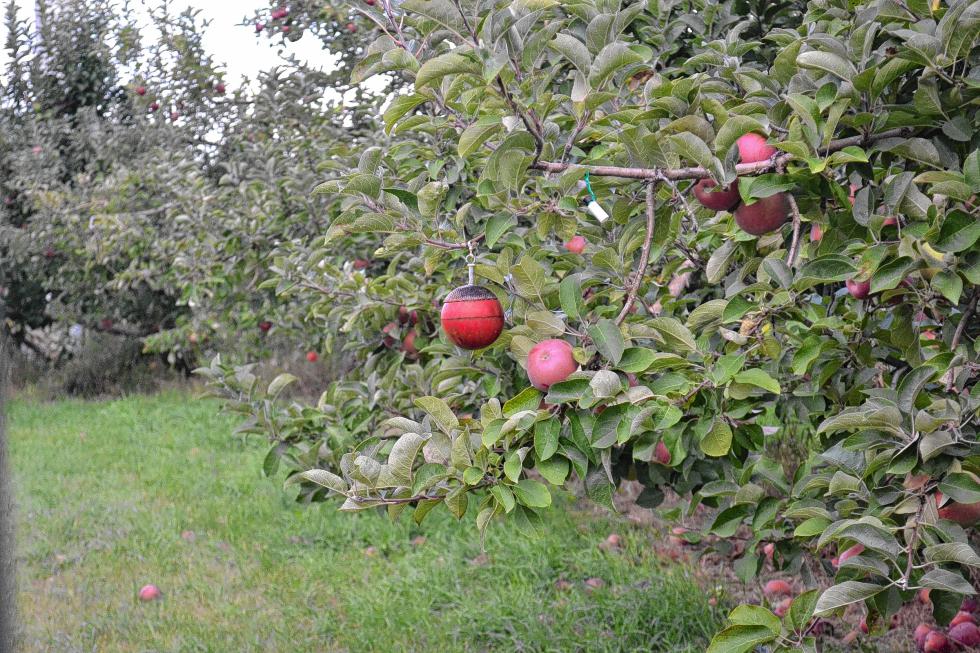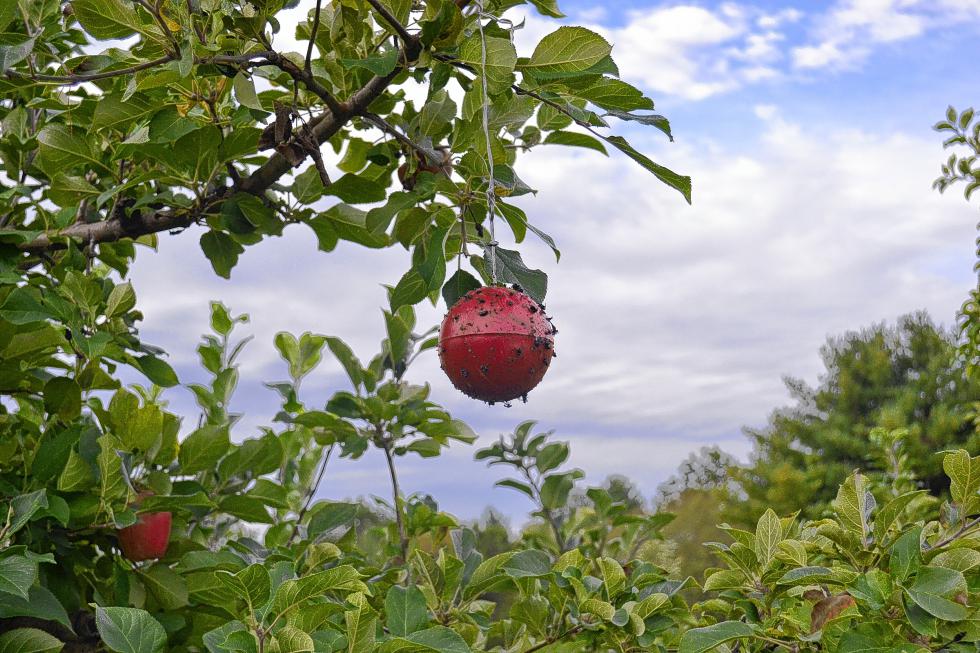Chuck Souther doesn’t want to use insecticides on his apple crop.
But if he didn’t, you probably wouldn’t be all that thrilled finding apple maggots inside your freshly picked fruit.
So for 30 years, Souther has been trying to find a way where he doesn’t have to spray his Apple Hill Farm crop, while still keeping the annual pest away from the apples you want to make pies, crisps and doughnuts out of.
The only tricky part is that whatever he tries, can happen just once a year. See, the apple maggots emerge as flies from the ground sometime in July and lay eggs in August, which then turn into worms and destroy the apples. Then it’s wait ’til next year.
“You’ve got just one chance to do research,” Souther said. “A lot of this can’t be replicated in a lab. This is field research.”
Some of the ideas have not worked out so well, but every year Souther learns something that he can apply to the project.
It started with some students at UMass all the years ago, who now happen to work at the USDA’s Appalachian Fruit Research Laboratory in Kearneysville, W.Va. And they’ve stayed interested. Apple Hill Farm is one of a few orchards in New England that is actively researching a method to control and manage the apple maggot.
“We just kept the project going,” Souther said. “It’s a pretty cool project, and its taken time. We’ve learned a whole lot in the process . . . and that’s the key to the whole thing.”
It started out using croquet balls painted a certain shade of red covered in Tangle-Trap, which is something we learned you don’t want to get on you. It’s sticky, very sticky.
“It worked, but it wasn’t practical,” Souther said.
The flies were attracted to the color and since they taste and smell with their feet, they’d land and get stuck – meaning they can’t lay eggs.
The idea of a red sphere has evolved and changed over the years to what Souther is using now. He still hangs the croquet balls, but doing it over 10 acres, which is the area under research this year, is not something anyone wants to do. As Souther put it, you end up with sticky stuff in your hair, on your steering wheel and the keys to your house.
Nowadays, he uses plastic red spheres made specifically for this purpose. The top opens up and Souther fills it with a low level innocuous insecticide mixed. There’s also a separate vile hanging real close with a ripening apple odor.
“It took a long time to figure out how to do it,” he said.
Over the years, they’ve found that the apple maggot is attracted to both the color and smell of apples – so might as well give them what they want. The insecticide is also water soluble.
“So it’s constantly creating a coating of the insecticide,” Souther said.
The hope is that the pest will be attracted to the fake apples and go to the afterlife before laying their eggs in the real ones.
“Worms in the apples are not a good thing to have,” Souther said.
Using a 10-acre circle out of his 20-acre apple crop – so he can compare to a section that just uses a spray – Souther set up a perimeter of the spheres every five meters (which is a little over 16 feet) to see if it will draw the flies from the outside and inside of the circle. The data collected will then be used to hopefully take another step forward next year.
“We’re trying to figure out how many we have to hang to get to all the apple maggots,” he said. “And it’s got to involve a perimeter of some sort.”
They’ve learned a lot about the apple maggot, so while it’s been a long process, there’s been a lot of progress made.
“Here we are 30 years later, and we think we’ve got it down to where we can say it works,” Souther said.
Souther and the rest would love to get to a point where it can be sold commercially, but it’s just not there yet.
“You’ve got to show it works,” he said.
So while they stick out like a sore thumb in a tree full of golden delicious, the red spheres may be a little bit more camouflaged when mixed in with macs or cortlands, so just be careful where you grab – especially if its got that sticky stuff on it.
“This stuff sticks to everything and it doesn’t come off,” Souther said.
Apple season will run for a couple more weeks, so if you haven’t already, go out and pick some.













